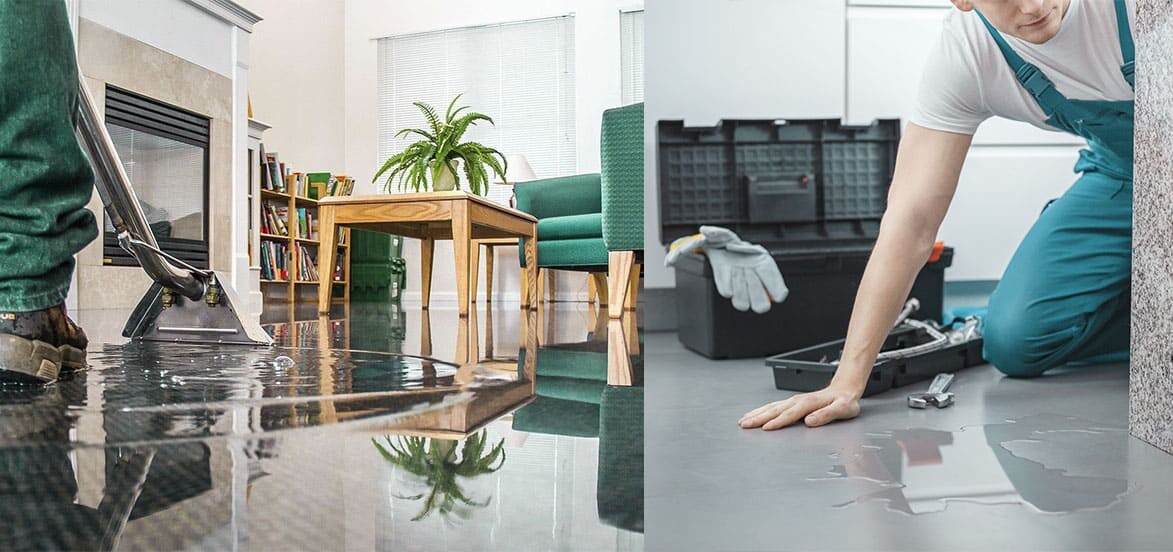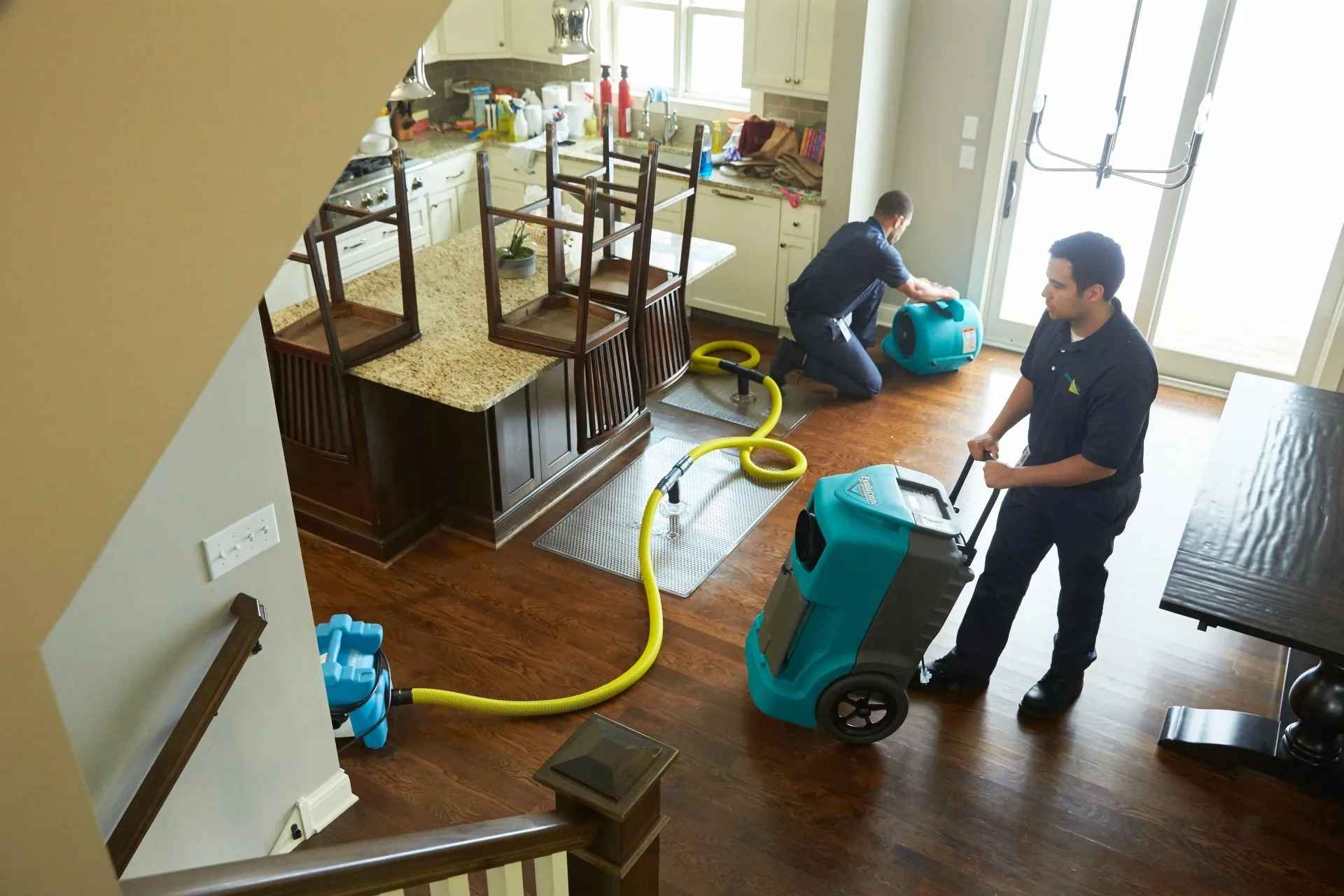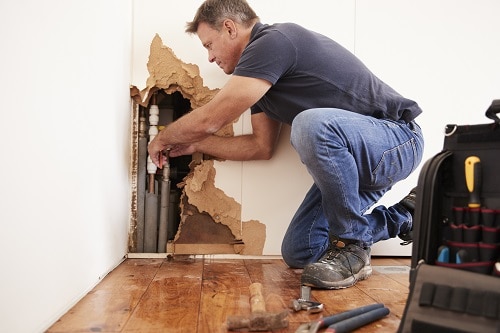What happens when you schedule Flood Cleanup Services
Wiki Article
Water Damage Restoration 101: Understanding the Process and Expense
Water damage can strike unexpectedly, leaving property owners in a state of confusion. Understanding the restoration procedure is necessary for effective recovery. From reviewing the damage to picking the ideal company, each action impacts the overall outcome and expense. Elements such as the kind of water damage and urgency also play a substantial role. What are the details strategies utilized in remediation, and just how can one prepare for prospective expenses?Types of Water Damage

First Evaluation and Inspection

Water Removal Strategies
Complying with the initial analysis, efficient water removal methods are employed to mitigate damage and avoid further problems. These techniques include using specialized tools such as industrial-grade vacuums and completely submersible pumps - Emergency Water Removal. The choice of method relies on the quantity of water present and the type of products affected. For standing water, completely submersible pumps are typically used for quick elimination, while vacuum cleaners are perfect for removing water from carpetings and furniture. In addition, progressed techniques like water extraction mats might be utilized for hard-to-reach locations - Flood Cleanup Services. The goal is to eliminate as much water as possible, lessening the capacity for mold and mildew development and structural damage. Trigger and reliable water extraction is necessary in the general water damage remediation procedureDrying Out and Dehumidification Process
As soon as the water extraction is total, the drying and dehumidification procedure comes to be essential to recovering the damaged location. This phase typically utilizes industrial-grade dehumidifiers and air movers to effectively decrease dampness degrees. The dehumidifiers reel in damp air, eliminating excess humidity, while air movers flow air to speed up dissipation. Monitoring tools is typically made use of to track humidity and temperature degrees, guaranteeing perfect drying conditions. The period of this procedure can vary depending on the extent of the water damage and environmental variables. It is necessary to extensively dry all affected materials, consisting of walls, floor covering, and furnishings, to avoid mold growth and architectural damage. Appropriate execution of this step is essential for an effective remediation end result.Cleansing and Sanitizing Afflicted Locations
A complete initial assessment and assessment of affected locations is important to recognize contamination degrees when the drying procedure is full. Flood Cleanup Services. Reliable cleaning strategies and appropriate items must after that be utilized to get rid of particles and discolorations. Ultimately, sanitization and disinfection techniques are necessary to assure that unsafe microorganisms are gotten rid of, restoring the area to a risk-free problemInitial Analysis and Examination
Prior to beginning any restoration initiatives, a complete preliminary assessment and assessment of the impacted areas are important for reliable cleaning and sanitizing. This process entails determining the extent of water damage, determining the resource of the water invasion, and examining the materials impacted. Inspectors normally seek indications of mold and mildew development, structural honesty issues, and damaged possessions. The assessment additionally consists of checking moisture levels using customized devices to ensure no concealed water pockets stay, as these can bring about more problems. Documenting the findings is important for planning the following steps in the remediation process. A thorough first analysis makes it possible for remediation specialists to develop a targeted strategy for reliable cleaning and disinfecting, inevitably lessening damage and health dangers.Cleansing Methods and Products
Reliable cleaning and sanitizing of water-damaged locations require a variety of items and strategies customized to the specific products impacted. For porous surfaces like drywall and carpets, removal techniques are important to remove excess wetness, complied with by deep cleansing with specialized cleaning agents. Non-porous materials such as floor tile or steel can be cleaned up using commercial-grade cleaners that efficiently remove pollutants. Steam cleansing is an additional effective technique, specifically for carpets and furniture, as it makes use of heats to get rid of bacteria and mold (Water Damage Restoration). Furthermore, green products are progressively prominent for their safety and efficacy - Water Damage Restoration. Ultimately, selecting the proper cleaning approaches and items not only guarantees instant sanitation but likewise help in protecting against more damage and carcinogen related to water breachSanitization and Disinfection Techniques
When attending to water damage, appropriate sanitization and sanitation methods are necessary to ensure the safety and health of the affected environment. After initial cleaning, surfaces should be treated with ideal anti-bacterials to remove pathogens, mold and mildew, and bacteria that flourish in moist problems. Common methods consist of the usage of EPA-approved chemical anti-bacterials, which can be applied with splashing or cleaning methods. Furthermore, ultraviolet (UV) light systems can properly sanitize locations by reducing the effects of bacteria without harsh chemicals. The choice of method usually depends upon the kind of products impacted and the degree of contamination. Ultimately, thorough sanitization not just brings back a risk-free space but additionally aids protect against future health risks associated with lingering moisture and mold and mildew growth.
Repairs and Restoration Options
Examining the damage triggered by water exposure is crucial for establishing the suitable repair services and repair options. Homeowners might face different concerns, including damaged drywall, warped floor covering, and endangered structural aspects. Depending on the level of the damage, repairs may entail changing areas of drywall, setting up brand-new floor covering, or reinforcing architectural beam of lights. In situations of extreme damage, complete replacement of affected products could be needed. In addition, specialist conservators usually advise using wetness meters to analyze concealed dampness degrees prior to choosing the most effective strategy. It is essential to act immediately to stop mold and mildew development and more degeneration. Choosing the best alternatives not only restores the home however likewise guarantees lasting safety and performance.Elements Influencing Restoration Prices

The degree of water damage straight influences the restoration costs house owners can anticipate to sustain. Aspects such as the source of the water, the period of direct exposure, and the damaged products click here significantly influence pricing. Tidy water damage from a damaged pipe is generally much less costly to restore contrasted to damage created by sewage. In addition, the level of contamination dictates the requirement for specialized cleaning and disposal solutions, better enhancing expenses. Geographic location likewise contributes, as local labor rates and availability of restoration services can vary. Lastly, the urgency of the action impacts expenses; quicker interventions usually cause lower general expenses by protecting against more damage. Recognizing these variables is vital for home owners when approximating repair expenses.
The three main types of water damage are classified based on contamination levels: clean water, gray water, and black water. A detailed initial analysis and assessment are important steps in the water damage reconstruction procedure. For standing water, completely submersible pumps are generally used for fast elimination, while vacuum cleaners are excellent for removing water from carpets and upholstery. The degree of water damage straight affects the reconstruction sets you back home owners can expect to sustain. Clean water damage from a damaged pipe is normally much less costly to restore contrasted to damage triggered by sewer.
Report this wiki page